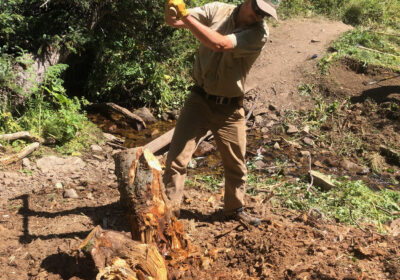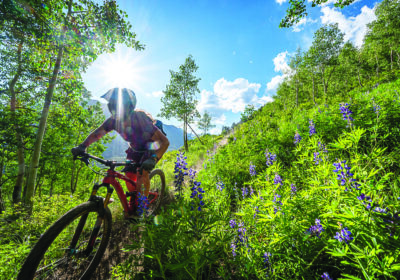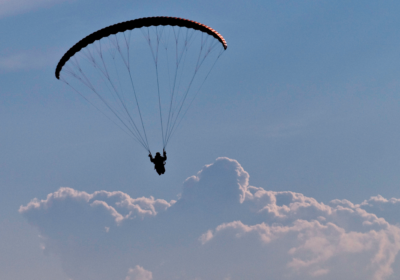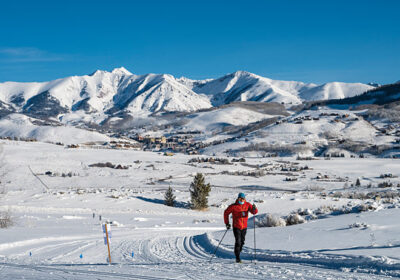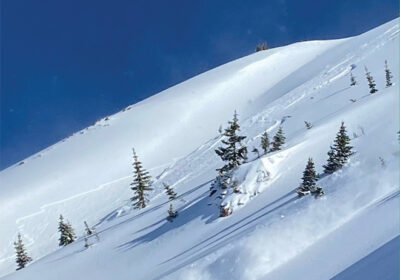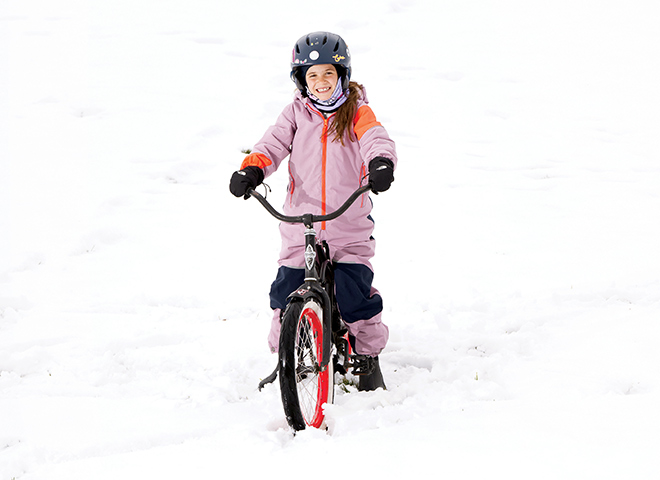
- Stats: 470 0
- Posted: January 9, 2023
- Category: About CB, What To Do
Where the rubber hits the ice
The fine art of riding on frozen tundra
[ by Mike Horn ]
“Just keep your front wheel as straight as possible.”
“Don’t make any sudden turns!“
“Okay, we’re gonna take a left up ahead.”
“Ease into the turn.”
“Nice work!”
It was the first snowy commute to school in fall 2022, and the transition from warm pavement to hot powder made for greasy riding conditions.
I was playing helicopter dad, coaching my 7-year-old daughter along even though I could hardly keep my old townie on track. She was bundled up in ski gear like it was -20ºF outside, puffed up like a marshmallow and protected by her winter helmet and facemask. By the time we got to school her cheeks were flushed and she asked to shed some layers.
The schoolyard was bustling. There were bikes and scooters and students scattered about; parents huddled together and lamenting that cold mornings come too soon; and a group of boys took turns whipping a BMX bike through the slush.
Ready or not, snow season was upon us. We were a little out of practice, but soon these daily rides and slides to school would become second nature.
Getting around town by bike in the winter is no joke however, especially once the streets turn to frozen tundra. For weeks and even months on end, pavement disappears beneath a bulletproof layer of snow. In the deepest throes of winter, STOP signs get buried chin deep in the snow-walled maze that’s been burrowed through the streets of town.
It’s fluffy and surfable when fresh, then becomes perilously slick once it’s packed down, especially at intersections where cars repeatedly stop and skid through STOP signs, polishing the snow to a glassy sheen. Bikers beware—even studded tires struggle to hold traction in these high-traffic zones.
Controlled sliding is okay and even kinda fun, but falling is not an option. Laying it down on the ice hurts. It’s so abrupt and unforgiving. You hit the tundra before you even know what’s happening. We’ve all done it, whether on a bike or on foot. And when you’re sitting up in the cockpit of a bike, you’ve got further to fall. I tend to ride with my seat a little lower in the winter so it’s easier to dab a boot when my bike inevitably washes out.
One might ask: “Why bike in the winter at all if it’s squirrelly at best and downright dangerous at its worst?”
“Walking is just so primitive” a friend recently joked, in reverence for his old klunker. Biking is woven into Crested Butte’s DNA. It’s just how we get around. And for the most part you can ride a bike here all year long, without changing your setup at all.
I roll with studded tires on my old klunker—they’ve saved me from wiping out more than once. Of course they were still hanging in the garage during the first snowy commute of fall 2022.
As a writer, Mike Horn draws inspiration from the everyday moments that make up life in Crested Butte. Like biking in the snow. Mike, along with his wife, Lori, moved to Crested Butte a couple decades ago. With two young kids in tow and a long winter ahead, the snowy rides to school won’t end anytime soon.


